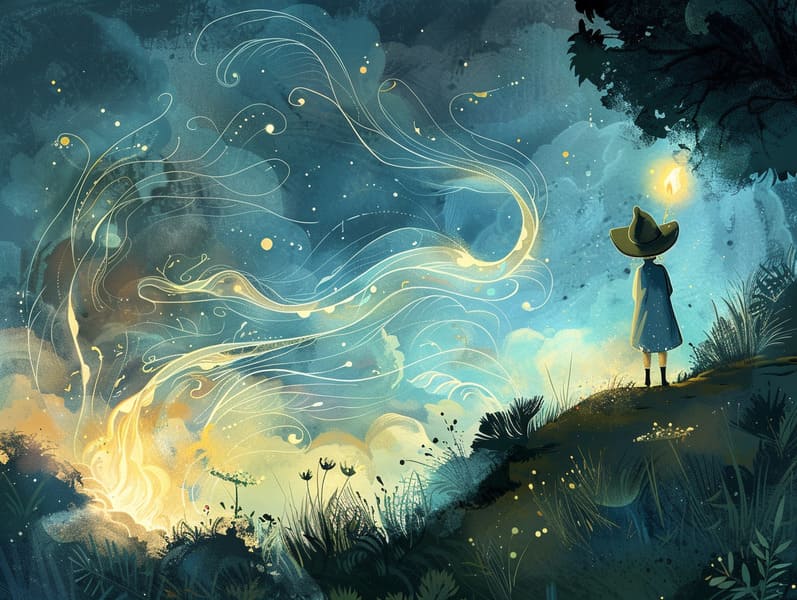A Brief History of Best Fairy Tales and Their Eternal Captivation.
A Brief History of Best Fairy Tales and Their Eternal Captivation.
Blog Article

Legendary fairy tales have ancient roots. These narratives have been narrated from one generation to the next millennia before they were ever inscribed. They were born from a variety of societies, including American traditions. They were initially disseminated among adults, often carrying themes and messages reflective of the societal norms and beliefs of the time.
The Brothers Grimm, Jacob and Wilhelm, were among the first to compile many of these beloved fairy tales. Their volume, "Grimm's Folk Tales," included classics like "Cinderella," "Hansel and Grethel," and "Snow-White and Rose-Red," which have since become staples in the world of traditional fairy tales. Similarly, Andersen's imaginative stories, such as "The Little Mermaid," and "The Duckling's Story," have captivated hearts worldwide, guaranteeing their place in the pantheon of beloved fairy tales.
Though they are old, traditional fairy tales remain as impactful as ever, especially as nighttime stories for kids. These whimsical stories are now available in different formats, including vibrantly illustrated books, enchanting animations, and online fairy tales.
Their unwavering allure can be linked to several enchanting factors:
Crucial Morals: Old fairy tales often whisper important moral lessons. Tales like "The Wolf and the Liar" teach the merit of truthfulness, while "The Story of the Tortoise and the Hare" point out the merits of perseverance and meekness. These narratives offer the young clear distinctions between virtue and vice, developing their moral compass in a subtle yet meaningful way.
Sympathy and Perception: Timeless fairy tales frequently depict protagonists facing challenges and struggles, fostering young readers to comprehend with their struggles and champion their triumphs. For instance, "Beauty and the Beast" conveys the necessity of seeing beyond looks to perceive the true essence of a character, enhancing compassion and perception.
Cultural Perception: Many ancient fairy tales are deeply embedded in the cultural contexts from which they developed. Delving into these tales can provide intriguing perspectives into different traditions, fostering a sense of cultural understanding and knowledge.
Inventiveness and Imagination: The magical elements in timeless fairy tales—magical spells—awaken children’s fantasy worlds. These fairy tales transport readers to extraordinary realms, inspiring innovative thinking and a sense of curiosity that remains a lifetime.
Ancient fairy tales are not only captivating but also illuminating. They serve as mesmerizing tools in strengthening various brain and heart skills in the young. When timeless fairy tales are recited, they improve speech development by introducing new terms and meanings and complicated sentence structures. This practice also fosters listening abilities and mindfulness, as kids pay these guys close attention, anxious to see what happens next.
Furthermore, exploring the themes and characters of classic fairy tales can advance evaluative skills and analytical skills. The young learn to see patterns, predict happenings, and catch on to cause and effect. These debates also support the young utter their thoughts and feelings, contributing to their emotional intelligence.
In today’s digital era, the availability of free fairy tales online has made these stories more obtainable than ever. Internet sites and apps supply comprehensive collections of ancient fairy tales that can be accessed or listened through anytime, anywhere. Fairy tales read aloud are particularly well-liked, presenting an entertaining method for young readers to delight in these fascinating tales. Spoken stories and voiced videos bring characters and settings to life, often enhanced by magical music and background music that intensify the tale-telling adventure.
The everlasting appeal of traditional fairy tales lies in their ability to modify to current eras while sustaining their main lessons. Contemporary reimaginings of these stories often spotlight more multicultural characters and modern settings, making them accessible to today’s audience. However, the key lessons of valor, warmth, and even-handedness remain unchanged, continuing to strike a chord with young readers of all ages.
Old fairy tales also offer a sense of reassurance and comprehensibility. They deliver a organized narrative with a plain beginning, middle, and end, often ending with the closure of conflicts and the triumph of honesty over deceit. This foreseeability can be encouraging for kids, making known a sense of invariability in an unpredictable world.
Traditional fairy tales continue to spellbind and educate new generations, maintaining their appeal and pertinence in modern society. As children's night stories, they extend a perfect blend of charm and understanding, enhancing moral values, empathy, and creativity. The prevalence of online storybooks and the prevalence of fairy tales told out loud guarantee that these timeless tales remain reachable to new generations.
By safeguarding and telling these tales, we continue to treasure the rich tapestry of narrative artistry and cultural heritage. Whether you are viewing a vividly illustrated book, exploring a digital library, or listening to an spoken story, the enchantment of popular fairy tales is always within reach. These fairy tales remind us of the consistent power of storytelling and its ability to bring us together across epochs and places.
Be it you are browsing a colorful picture book, seeing a online collection, or listening on an spoken story, the spell of popular fairy tales is always within reach.
These fairy tales convey of the eternal essence of tales and its ability to join us across centuries and lands, making a tie that delights and instructs alike.